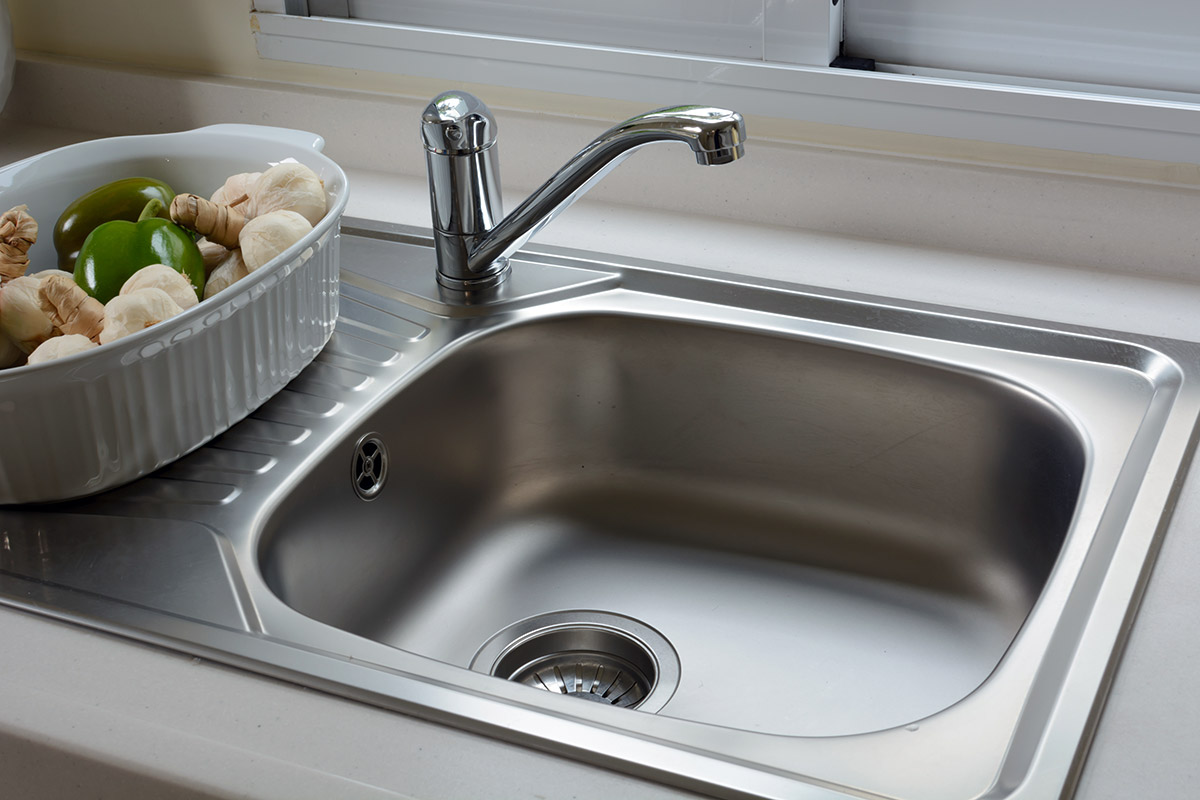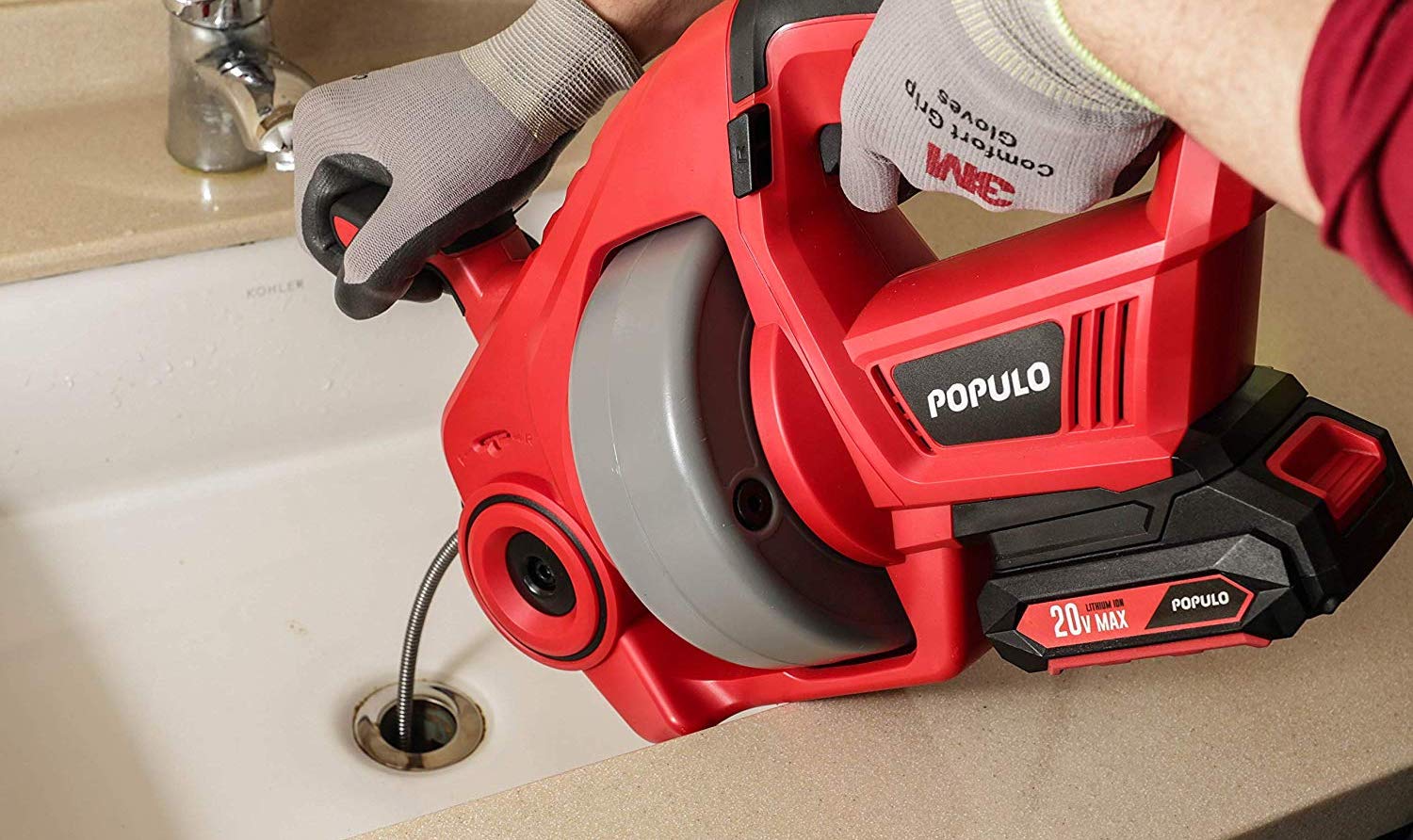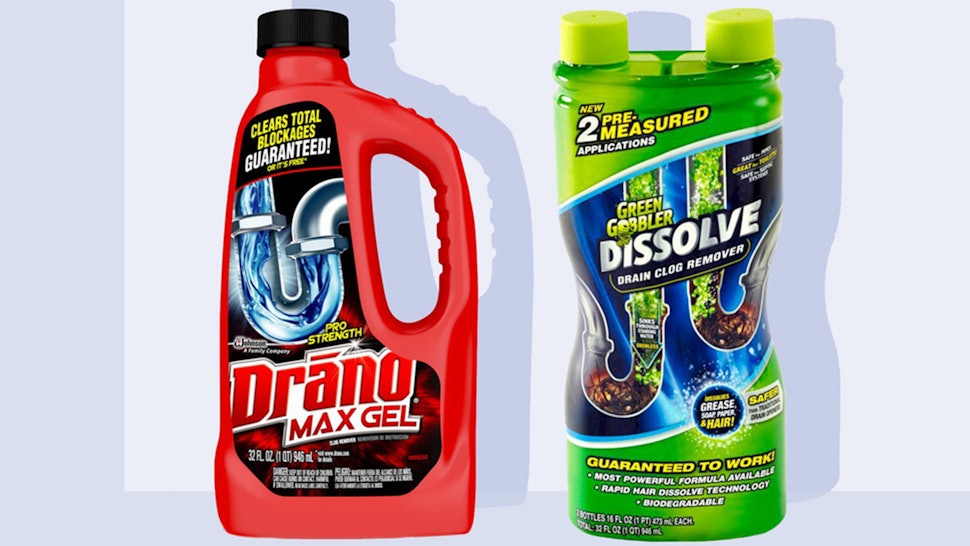If you've ever experienced a clogged bathroom sink, you know how frustrating it can be. Not only does it slow down your morning routine, but it can also lead to standing water and unpleasant odors. But don't worry, with the right tools and techniques, you can easily unclog your sink and get it draining quickly again.Clogged bathroom sink
One of the most common signs of a clogged bathroom sink is slow draining. This can happen for various reasons, such as hair buildup, soap scum, or foreign objects stuck in the drain. If you notice your sink is draining slower than usual, it's important to address the issue before it gets worse.Slow draining sink
A blocked sink is a more severe version of a slow draining sink. This occurs when the drain is completely obstructed, and water cannot pass through at all. This can happen if the clog is too big or if multiple factors are contributing to the blockage. In this case, it's essential to take immediate action to prevent any further damage to your sink or pipes.Blocked sink
Standing water in your sink is a clear indication of a clog. This can be caused by various reasons, such as a hair clog or soap scum buildup. Not only is standing water a nuisance, but it can also lead to foul odors and potentially damage your sink and pipes if left untreated.Standing water in sink
A plunger is a useful tool for unclogging a bathroom sink. It works by creating suction and pressure to dislodge the clog and allow water to flow freely again. To use a plunger, make sure there is enough water in the sink to cover the rubber end of the plunger. Place the plunger over the drain and push and pull in a rapid motion until the clog is cleared.Plunger
A drain snake, also known as a plumbing auger, is a long, flexible tool used to clear clogs in pipes. This tool is especially useful for hair clogs, as it can grab onto and remove the hair from the drain. To use a drain snake, insert it into the drain and twist it while pushing it further down the pipe. Once you feel resistance, pull it back up to remove the clog.Drain snake
If the clog is too stubborn for a plunger or drain snake, you can also try a chemical drain cleaner. These products are designed to dissolve hair, grease, and other clogs in your pipes. However, they can be harsh and damaging to your pipes, so use them sparingly and follow the instructions carefully.Chemical drain cleaner
Hair clogs are one of the most common causes of bathroom sink clogs. This is because hair can easily get caught in the drain and create a blockage. To prevent hair clogs, consider using a drain cover or regularly cleaning your drain with a drain snake.Hair clog
Another cause of bathroom sink clogs is grease buildup. This can happen if you regularly wash grease and oil down the sink. Over time, the grease can solidify and create a blockage in your pipes. To prevent this, avoid pouring grease down the sink and properly dispose of it in the garbage.Grease buildup
If you prefer to use natural and DIY methods for unclogging your bathroom sink, there are a few options you can try. For example, you can mix equal parts baking soda and vinegar and pour it down the drain, followed by hot water. You can also use a combination of hot water and dish soap or a mixture of hot water and salt. In conclusion, a clogged bathroom sink is a common household problem that can be easily fixed with the right tools and techniques. Whether you choose to use a plunger, drain snake, chemical drain cleaner, or DIY methods, make sure to address the issue as soon as possible to prevent any further damage. And remember to regularly clean and maintain your sink to prevent future clogs. DIY unclogging methods
Troubleshooting a Slow-Draining Bathroom Sink

Possible Causes and Solutions
 There are few things more frustrating than a bathroom sink that takes forever to drain. Not only does it create an inconvenience in your daily routine, but it also indicates a potential underlying issue with your plumbing system. Here are some common causes and solutions for a slow-draining bathroom sink.
Hair and Soap Buildup
One of the most common causes for a slow-draining bathroom sink is a buildup of hair and soap residue in the drain. Over time, these materials can accumulate and create a blockage that prevents water from flowing freely. To solve this issue, you can use a plunger or a drain snake to physically remove the buildup. Another option is to pour a mixture of hot water and baking soda down the drain, followed by vinegar, which will help break down and dissolve the buildup.
Clogged P-Trap
The P-trap, a curved pipe located under the sink, is designed to trap debris and prevent it from entering your plumbing system. However, this also means that it can easily become clogged with hair, soap scum, and other materials. To check if this is the cause of your slow-draining sink, place a bucket under the P-trap and unscrew it to remove any debris. You can then clean it out and reattach it to the sink.
Old Pipes
If your bathroom sink has been draining slowly for a while, the problem may be due to old or corroded pipes. Over time, pipes can deteriorate and become obstructed, resulting in poor drainage. In this case, it is best to consult a professional plumber who can assess the state of your pipes and replace them if necessary.
Improper Venting
Another possible cause for a slow-draining bathroom sink is improper venting in your plumbing system. Vents are designed to allow air to flow through the pipes, which helps water to drain smoothly. If these vents become blocked or damaged, they can create suction and prevent water from draining properly. A plumber can inspect and fix any issues with the vents to improve the drainage of your sink.
There are few things more frustrating than a bathroom sink that takes forever to drain. Not only does it create an inconvenience in your daily routine, but it also indicates a potential underlying issue with your plumbing system. Here are some common causes and solutions for a slow-draining bathroom sink.
Hair and Soap Buildup
One of the most common causes for a slow-draining bathroom sink is a buildup of hair and soap residue in the drain. Over time, these materials can accumulate and create a blockage that prevents water from flowing freely. To solve this issue, you can use a plunger or a drain snake to physically remove the buildup. Another option is to pour a mixture of hot water and baking soda down the drain, followed by vinegar, which will help break down and dissolve the buildup.
Clogged P-Trap
The P-trap, a curved pipe located under the sink, is designed to trap debris and prevent it from entering your plumbing system. However, this also means that it can easily become clogged with hair, soap scum, and other materials. To check if this is the cause of your slow-draining sink, place a bucket under the P-trap and unscrew it to remove any debris. You can then clean it out and reattach it to the sink.
Old Pipes
If your bathroom sink has been draining slowly for a while, the problem may be due to old or corroded pipes. Over time, pipes can deteriorate and become obstructed, resulting in poor drainage. In this case, it is best to consult a professional plumber who can assess the state of your pipes and replace them if necessary.
Improper Venting
Another possible cause for a slow-draining bathroom sink is improper venting in your plumbing system. Vents are designed to allow air to flow through the pipes, which helps water to drain smoothly. If these vents become blocked or damaged, they can create suction and prevent water from draining properly. A plumber can inspect and fix any issues with the vents to improve the drainage of your sink.
Preventative Measures
 To avoid future problems with your bathroom sink, it is important to take preventative measures. Regularly cleaning out your sink and drain with hot water and vinegar can help prevent buildup and blockages. You can also use a hair catcher in your drain to prevent hair from entering the pipes. Additionally, be mindful of what you pour down the sink, as certain substances can cause clogs.
In conclusion, a slow-draining bathroom sink can be caused by a variety of problems, but there are also several solutions to address them. By taking preventative measures and addressing any issues promptly, you can ensure that your bathroom sink drains quickly and smoothly. If you are unable to resolve the issue on your own, do not hesitate to seek the help of a professional plumber.
To avoid future problems with your bathroom sink, it is important to take preventative measures. Regularly cleaning out your sink and drain with hot water and vinegar can help prevent buildup and blockages. You can also use a hair catcher in your drain to prevent hair from entering the pipes. Additionally, be mindful of what you pour down the sink, as certain substances can cause clogs.
In conclusion, a slow-draining bathroom sink can be caused by a variety of problems, but there are also several solutions to address them. By taking preventative measures and addressing any issues promptly, you can ensure that your bathroom sink drains quickly and smoothly. If you are unable to resolve the issue on your own, do not hesitate to seek the help of a professional plumber.

















:max_bytes(150000):strip_icc()/close-up-of-overflowing-bathroom-sink-90201417-579787783df78ceb865822d8.jpg)



























/GettyImages-173683465-58f822b83df78ca159d4543a.jpg)

:max_bytes(150000):strip_icc()/toilet-plunger-80708184-5797d8885f9b58461f591260.jpg)


:max_bytes(150000):strip_icc()/toilette-plunger--92314164-873564a34a3441058f00a8d6fc1f0441.jpg)






/pulling-hair-from-a-drain-182861550-5797d2d43df78ceb86a46b8e.jpg)




























































